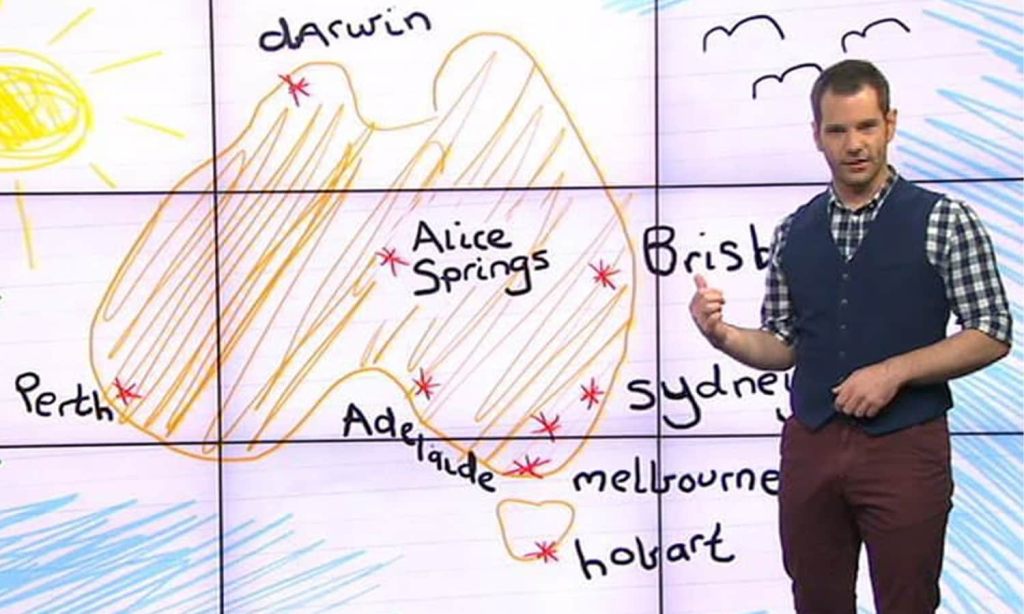If you’ve found yourself rapidly rearranging plans lately because the weather forecast is suddenly predicting a torrential downpour, only to have it turn out to be a perfectly sunny day, you might be forgiven for thinking that the weather forecast is currently being run by a thousand monkeys at a thousand typewriters.
It’s not just you though, the Australian weather has actually been poorly predicted, and is subsequently given as a less accurate forecast ever since the start of the pandemic.
The reason is, like most things these days, due to COVID. It’s not that the forecasters are having to social distance and so there are fewer of them to work, it’s actually all to do with the planes.
See, weather forecasters use a whole range of instruments to predict the weather, from satellites, to meteorological stations, to weather balloons, and yes, planes.
Most domestic and international aircraft have weather monitoring gear attached to the base of the plane, feeding back information about air temperature, relative humidity, air pressure, and wind along their journey.
With lots of planes in the air, it becomes easier to build up a solid picture of what the weather is doing and what it’s likely to do next. Of course, fewer planes, in response to something like a global pandemic, means less weather information and therefore less accurate forecasts.
This phenomenon has been noticed the world over since the start of the pandemic and one researcher in the UK decided to chart how badly our weather predictions were missing the mark due to the impact of COVID.
Dr. Ying Chen at Lancaster University found that regions that saw flights drop off by 50-75% saw a “large deterioration in forecasts,” including North America, southeast China, and Australia. He wrote that our Bureau of Meterology had been off by an average of 0.5 to 1.5 degrees Celsius during lockdown.
From March 2020, Australia actually saw a 90% drop in flights over the country, so it’s little wonder that our weather predictions have been so wrong.
However, the BOM did not take this report lying down, hitting back that their forecasts have not been accurate by saying that they’ve been able to use data from elsewhere to make up for the lack of planes.
“The Bureau is able to rely on other systems which provide similar data, such as satellites and wind profilers, to fill any gaps as a result of reduced observations from commercial aircraft and therefore is not experiencing any appreciable impact to the accuracy of its forecasts and warnings,” a spokeswoman said.
Craig Bishop, a professor of weather prediction at the University of Melbourne, has said that even during the height of the pandemic, enough flights were likely running to still get enough accurate information.
“Most of the value is from the ascent and descent, and you get the ascent and descent just from a domestic flight.”
The World Meteorological Organization has been warning since May of 2020 that COVID would impact global weather forecasts and were concerned that in regions typically affected by extreme weather events like hurricanes, there might not be enough early warning to get people to safety.
However, Australia appears to have been able to circumvent much of the worst of it, leaving us to question whether or not to bring a jumper or an umbrella rather than whether we need to prepare for a flood or hurricane.
At the end of the day, predicting the weather is hard. As ABC weatherman Nate Byrne explains, there’s a lot of atmosphere full of weather to predict. This is more so the case in Australia where we’ve got a cold south and a warm north mingling and creating havoc with each other. Basically, modelling patterns as complicated as the movement of air and water across the entire globe is just incredibly tricky and while we like to think we’ve got a handle on it and are masters of our own universe, we’re really not.
“In reality, any forecast beyond three days gets a bit dodgy, and, at a week, you’re practically looking at fiction,” Byrne said.
“Think ‘loosely based on a true story’ rather than a documentary.”
There’s also the psychological perception that the weather forecast is always wrong caused simply by noticing when it’s inaccurate far more often than when it’s correct. Unexpected weather has the tendency to memorably ruin or change our plans whereas weather that arrives as predicted simply fades into the background.
So, whether the weather is actually more inaccurate or we’re just noticing it more is hard to say. However, it’s likely to continue to be a source of frustration and concern for at least another few months, as the La Niña weather system brings more wet and humid days to us across the summer. Keep an eye on those apps, but keep an alternative plan in your back pocket just in case.
Read more stories from The Latch and subscribe to our email newsletter.







